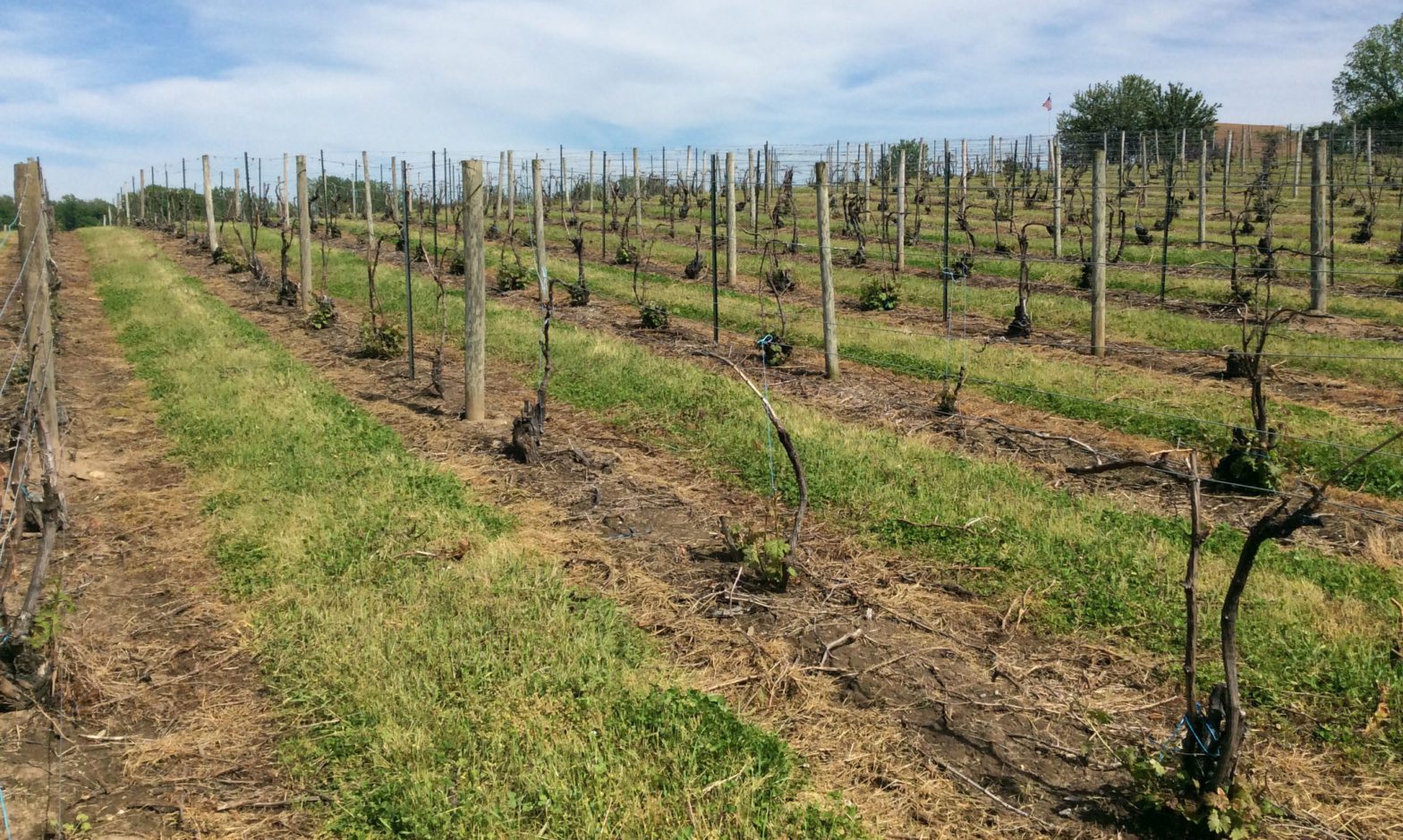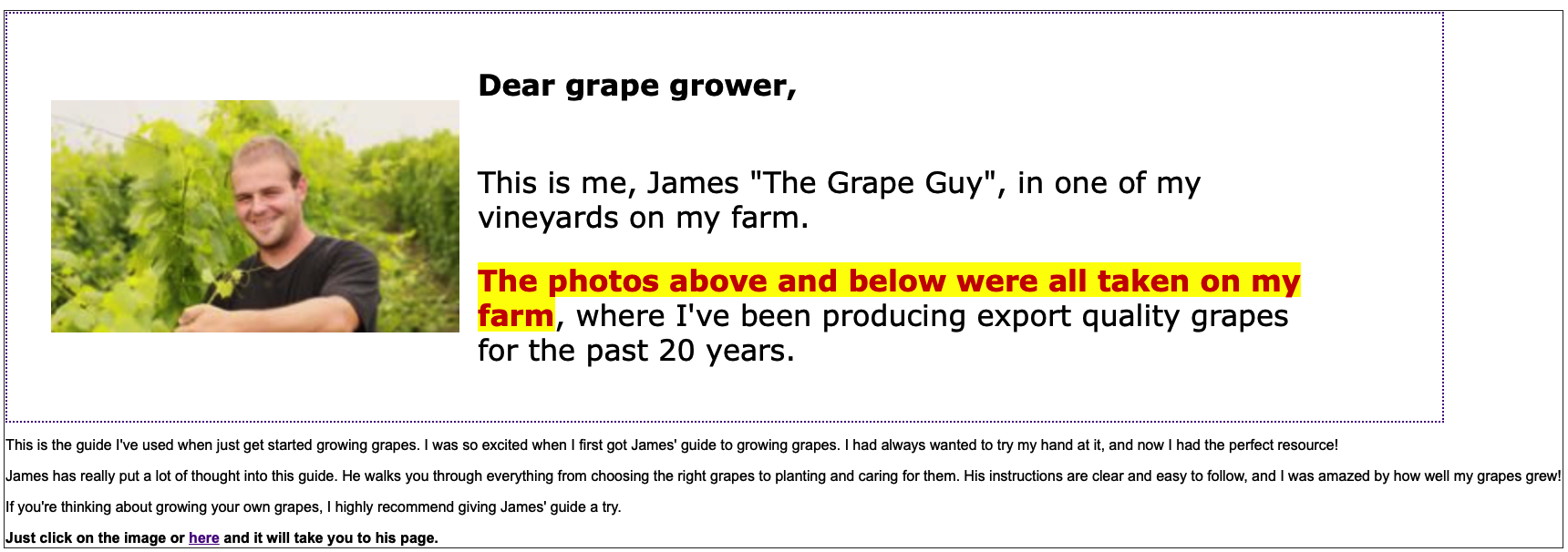This information assumes that you will be purchasing one year old vines from your chosen nursery.
Spacing between rows. This is the easy one to explain because it really has nothing to do with the vine growth itself. The main factors are more about maneuverability, sunshine exposure, and air flow. The idea is to make sure that you have enough room to work your plants comfortably. 5′-6′ between rows is recommended if you are working the plants by hand. Use 5′ if you have a smaller area and you need to take full advantage of your available land.
Based on a 6′ tall trellis system, using a simple VPS (Vertical Positioning System), anything below 5′ between rows can cause one row to shade the next and also cause poor air circulation.
Good air flow through the canopy helps control fungus disease. If possible keep the distance between rows minimum 6′. If you intend to drive a tractor, riding mower or any other vehicle between the rolls you will need to space the rows at least 3-4′ wider than the width of the vehicle so that you can operate the vehicle effectively and safely.
Spacing between plants. Think about the region you live in, what your climate is, what your soil mixture is and what grape variety you intend to plant. Basically how vigorous will your vine will be regarding those factors?
If for instance you live in high soil fertility, deep clay with lots of organic matter and lots of rainfall in a hot climate, then you are likely to need more spacing between your vine rows. Approximately 6-8′ apart.
However, if you have poorer soils and you are located in a dry region much less distance maybe more appropriate. 4′-6′ spacing might be ideal.
The planting hole should be about 8″ wide by 8-12″ deep. If you have a grafted vine then make sure the graft union is at least 2-4″ above ground level. The root system should fit comfortably in the hole.
Naturally, what direction that is optimum for your rows will depend on your particular available site area and the region you live in. If you can, run your rows North and South for maximum sunlight capture. And if you are in a warmer climate you may consider slightly angling them Southwest to Northeast to reduce intensity.
Most importantly, plant your vines in rows for best airflow and maximum sunlight.
Take time to understand the growth habits of the particular grape variety you have chosen. This is where local advice can help. Grapes are grown in almost all areas of the world now where region specific knowledge and experience is usually readily available.



You write: “Based on a 6′ tall trellis system, using a simple VPS (Vertical Positioning System), anything below 5′ between rows can cause one row to shade the next and also cause poor air circulation.” That’s the system I plan to use (first-time grape-grower, using Catawba grape cuttings from a friend). But my space is quite limited. Is it feasible to plant the rows any closer if I alternate the height of the cross-wires? Or would that actually block even more sun since the light is coming down at an angle?
Catawba grape cuttings are a good choice for a first-time grape-grower. They are known to be hardy and disease resistant.
The main concern with planting grapevines too close together is the lack of air circulation. Poor air circulation can lead to fungal diseases such as powdery mildew.
The VPS system is designed to allow for proper air circulation and prevent one row from shading the next, so it is not recommended to plant the rows any closer together. If you alternate the height of the cross-wires, you may be able to get away with planting the rows a little closer together, but it is not ideal.
It is always better to err on the side of caution when it comes to grapevines, so we would recommend following the guidelines for spacing set by the VPS system. This will give your grapevines the best chance to thrive.
Does spacing between vines effect the quantity of fruit per vine and the quality of the fruit. The closer together, the more competition between plant for moisture, nutrients etc. Versus the further apart you plant the vines in a row the more fruit per vine possible and the lower the quality. Consider 1.5 feet between plants versus 3 or 5 feet between plants in a row..
Grape growers often debate the best spacing distance for vines, and there are pros and cons to both 1.5-foot and 3- or 5-foot spacing.
There is some evidence that suggests spacing between vines can affect the quantity and quality of fruit produced. In general, vines should be spaced far enough apart so that all the vines in the row can receive adequate sunlight and irrigation. If vines are too close together, they may compete for resources and produce fewer and smaller fruit. Additionally, the quality of the fruit may suffer if the vines are not spaced properly.
With 1.5 feet between plants, you may get a higher yield of fruit per vine, but the quality of the fruit may not be as good as with wider spacing. With wider spacing, you’ll likely have fewer grapevines per row but the grapes will be larger and of better quality.
Ultimately, it is up to the grape grower to decide what spacing works best for their particular vineyard.
In my opinion, the spacing between vines does affect the quantity and quality of grapes. I believe that a grower would get fewer but larger and better quality grapes with wider spacing. I think that 1.5 feet between plants is too close and the vines will compete for resources resulting in smaller grapes.